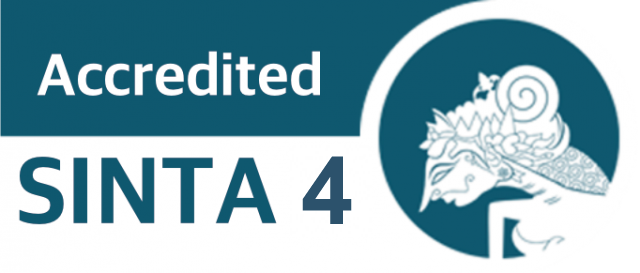Effectiveness of the chemical ludo game on shifting equilibrium material and the factors that influence on learning outcomes
DOI:
10.29303/jpm.v18i2.4758Published:
2023-03-30Issue:
Vol. 18 No. 2 (2023): March 2023Keywords:
Practicality, Effectiveness, Chemistry Ludo Game, Shifting Equilibrium, Learning OutcomesArticles
Downloads
How to Cite
Downloads
Metrics
Abstract
This research is a continuation of development research with a 4-D model developed by Rini Fauza and Iswendi with the title Development of Ludo Chemistry Games as Learning Media on Material Shifting Equilibrium and Factors Affecting It Class XI SMA/MA which is valid but has not been tested for practicality and its effectiveness. This study aims to determine the level of practicality and effectiveness of chemical ludo games. The research design was the Pretest-Posttest Control Group Design. The research sample was XI MIPA 1 as the experimental class and XI MIPA 2 as the control class. Practicality data were analyzed with the practicality percentage and effectiveness data with the N-Gain test. The data analysis results on the practicality of teachers and students are in the very practical category. The results of the N-Gain analysis in the experimental class were 80% in the effective category and in the control class 74% in the quite effective category, which was supported by the learning outcomes of the experimental class, which were higher than the control class. The average posttest scores for the experimental and control classes were 84.83 and 81.17, respectively. The learning outcomes of the experimental class increased from the control class where tcount (2.465) > ttable (2.002) at a significant level α = 0.05. Ludo chemistry games as learning media are very practical and effective in improving student learning outcomes in the cognitive domain of class XI SMAN 1 Lubuk Basung.
References
Kemendikbud (2018). Salinan Permendikbud Nomor 37 Tahun 2018. Jakarta: Kemendikbud.
John, D. L. (1998). Media Pengajaran Dalam Proses Belajar Mengajar Masa Kini. Jakarta: Depdikbud.
Lowe, N. K. (Ed.). (1988). Games and Toys in the Teaching of Science and Technology: A Resource Document on Low Cost Educational Activities for Children in Primary and Early Secondary Levels of Education (No. 29). Unesco, Division of Science Technical and Environmental Education.
Amkas, S. S. I. M., Tegeh, I. M., & Mahadewi, L. P. P. (2017). Pengembangan Media Ludo Word Game Siswa Kelas IV Sdn 1 Banjar Bali Tahun Pelajaran 2017/2018. Jurnal EDUTECH Undiksha, 8(2).
Kurniawan, R., & Syafriani, S. (2021). Praktikalitas dan Efektivitas Penggunaan E-Modul Fisika SMA Berbasis Guided Inquiry Terintegrasi Etnosains untuk Meningkatkan Berpikir Kritis Peserta Didik. Jurnal Eksakta Pendidikan (Jep), 5(2), 135-141.
Fauzan, A., Plomp, T., & Gravemeijer, K. (2013). The development of an rme-based geometry course for Indonesian primary schools. Educational design research–Part B: Illustrative cases, 159-178.
Daryanto. (2011). Media Pembelajaran. Bandung: Satu Nusa Studio.
Mulyasa, E., Iskandar, D., & Aryani, W. D. (2016). Revolusi dan inovasi pembelajaran. Revolusi Dan Inovasi Pembelajaran.
Badriyah, B. (2017). Efektifitas Proses Pembelajaran Dengan Pemanfaatan Media Pembelajaran. JURNAL LENTERA KOMUNIKASI, 1(1).
Mardianto, P. P. (2012). Landasan untuk Pengembangan Strategi Pembelajaran. Cet. II (Medan: Perdana Publishing, 2012).
Hanafiah, N., & Suhana, C. (2009). Konsep strategi pembelajaran. Bandung: Refika Aditama.
Fadillah, A. R., & Iswendi, I. (2019). The Effectivity an Instructional Media of Ludo Game Based on Chemo-Edutainment (CET) for Atomic Structure Toward 1st Grade Students Achievement from SMAN 3 Padang. Edukimia, 1(3), 102-106.
Fauza, R. (2021). Pengembangan Permainan Ludo Kimia sebagai Media Pembelajaran pada Materi Pergeseran Kesetimbangan dan Faktor-Faktor yang Mempengaruhinya. Ranah Research: Journal of Multidisciplinary Research and Development, 3(2), 39-47.
KEPUSTAKAAN, D. (2014). Sugiyono, Metode Penelitian Kombinasi (Mixed Methods), Bandung: Alfabeta, 2013. Jurnal JPM IAIN Antasari Vol, 1(2).
Purwanto, N. (2012). Prinsip-prinsip teknik evaluasi pengajaran. Bandung: PT Remaja Rosdakarya.
Hake, R. (1999). Analyzing Change/Gain Score. USA: Indiana.
Silberberg, M. S., Amateis, P., Venkateswaran, R., & Chen, L. (2006). Chemistry: The molecular nature of matter and change (Vol. 4). New York: McGraw-Hill.
Jespersen, N. D., & Hyslop, A. (2021). Chemistry: The molecular nature of matter. John Wiley & Sons.
Trianto. (2012). Model Pembelajaran Terpadu. Jakarta: Bumi Aksara.
Sulung, M. H., & Erman, E. (2022). Science teachers innovation in overcoming learning challenges during Pandemic Covid-19: A Reflection. Jurnal Pijar Mipa, 17(5), 560-568.
Nieveen, N., & Gustafson, K. (1999). Characteristics of computer-based tools for education and training development: An introduction. Design approaches and tools in education and training, 155-174.
Putri, D. F. A., & Yuliastuti, L. P. S. (2022). Effect of health education using demonstration media for breast self-examination motivation for women in preventing breast cancer. Jurnal Pijar Mipa, 17(5), 679-682.
Sundayana, H. R. (2015). Media dan Alat Peraga Dalam Pembelajaran Matematika, untuk guru, calon guru, orang tua dan para pecinta matematika.
Sudjana, M. S. (2005). Bandung: Tarsito.
Rante, P., & Ihsan, N. (2013). Pengembangan multimedia pembelajaran fisika berbasis audio-video eksperimen listrik dinamis di SMP. Jurnal Pendidikan IPA Indonesia, 2(2).
Author Biographies
Resha Rinelda, Chemistry Education Department, Faculty of Mathematics and Natural Sciences, Universitas Negeri Padang
Iswendi Iswendi, Chemistry Education Department, Faculty of Mathematics and Natural Sciences, Universitas Negeri Padang
License
Copyright (c) 2023 Resha Rinelda, Iswendi Iswendi

This work is licensed under a Creative Commons Attribution 4.0 International License.
The following terms apply to authors who publish in this journal:
1. Authors retain copyright and grant the journal first publication rights, with the work simultaneously licensed under a Creative Commons Attribution License 4.0 International License (CC-BY License) that allows others to share the work with an acknowledgment of the work's authorship and first publication in this journal.
2. Authors may enter into separate, additional contractual arrangements for the non-exclusive distribution of the journal's published version of the work (e.g., posting it to an institutional repository or publishing it in a book), acknowledging its initial publication in this journal.
3. Before and during the submission process, authors are permitted and encouraged to post their work online (e.g., in institutional repositories or on their website), as this can lead to productive exchanges as well as earlier and greater citation of published work (See The Effect of Open Access).











